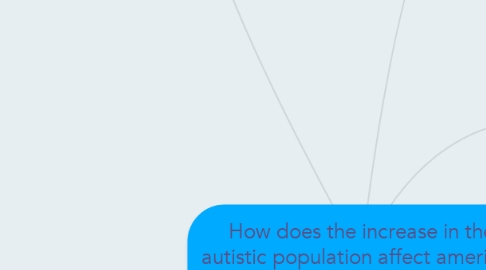How does the increase in the autistic population affect american culture?
by Katie Szczepanski

1. Problems and difficulties
1.1. The primary problem that characterises the thinking of individuals with autism is the inability to impose meaning on their experiences
1.2. It is frequently difficult for students with autism to pay attention to what their teachers want because they are focusing on sensations which to them are more interesting or Important.
1.3. Autism is a lifelong problem with a number of possible causes
2. thesis statement
3. What is autism?
3.1. No two people with autism will have exactly the same symptoms
3.2. Several different genes appear to be involved in autism spectrum disorder
3.3. Autism is a hidden disability
4. Effects on people and society
4.1. A person with autism will find it much harder to understand the feelings of other people
4.2. Most children with ASD are slow to gain knowledge or skills, and some have signs of lower than normal intelligence
4.3. Some people with ASD need a lot of help in their daily lives, others need less
4.4. Around a third of people with a learning disability may also be autistic
4.5. It will be important to use the same methods to track how the number of children with ASD is changing over time in order to learn more about the disorder.
5. Symptoms of autism
5.1. As many as 40% of people with autism never speak
5.2. At least 33% of adults are able to achieve at least partial independence
5.3. There is no cure for ASD
5.4. About 25% of individuals with ASD are nonverbal but can learn to communicate using other means
5.5. All children and adults with autism have communication problems
6. What can cause autism
6.1. There's no blood test or scanning device that can detect autism
6.2. Fewer than one percent of the 4 million or so children born in the United States each year eventually are diagnosed as having ASD's
6.3. Autism is more common in children born prematurely
6.4. The clearest evidence of these autism risk factors involves events before and during birth


